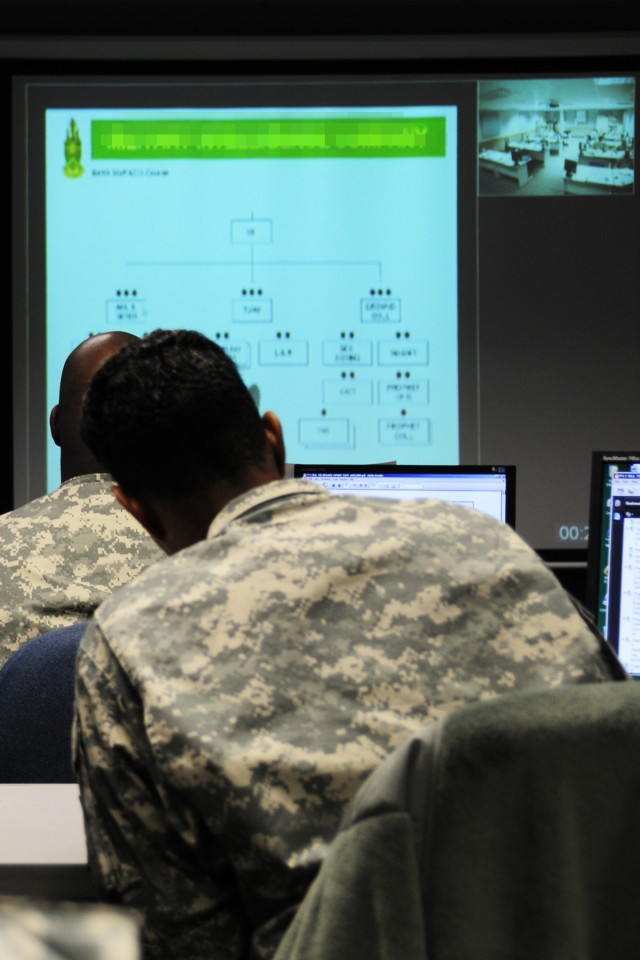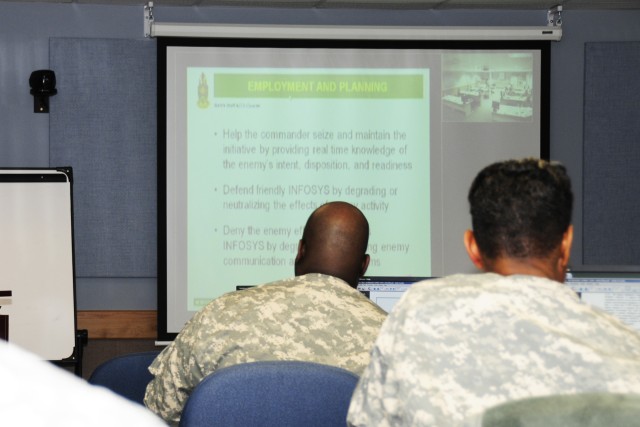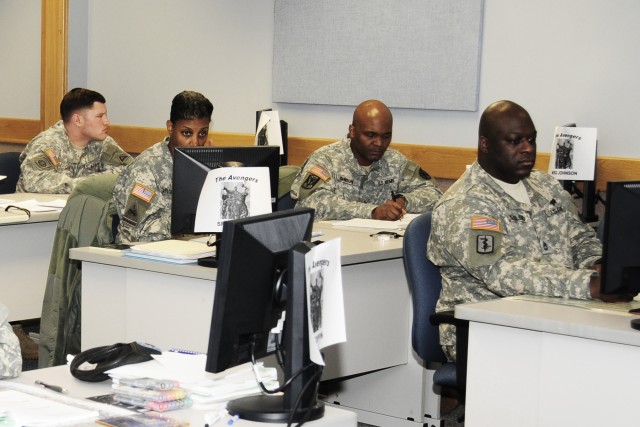Twenty-three Noncommissioned officers from all over Europe graduated from the U.S. Army Sergeants' Major Academy's Battle Staff NCO Course, a course offered exclusively via video tele-training (VTT), at the Combined Arms Training Center (CATC) in Vilseck, Germany. The 5-week course ran from Jan. 25 through Feb. 12.
"Typically in a year we have more than 5,000 Soldiers go through Distributed Learning Courses," said Chief Warrant Officer Stanley Edwards, deputy chief for the Distributed Learning Branch of the CATC. "One of the most important things is the Soldier is close to home station. He or she can maximize the time with family before he or she deploys."
"When I was in Germany before, I would have to go back to the States for my Basic Noncommissioned Officer Course or Advanced Noncommissioned Officer Course, said Staff Sgt. Daniel Harris, medical operations officer-in-charge, 421st Multifunctional Medical Battalion. "Now I am able to stay here in the confines of my backyard, where I can get to see my family. These days with the operational tempo the way it is, that's a great thing."
This time last year, Harris was deployed.
"We had a three-day weekend, since I got here [for the course]," he said. "I even got to see my boys play a basket ball game, something I missed this time last year. It's a great perk."
The students and teachers all agree; participating in a class by VTT does create a less intimate experience between teacher and students.
It's not like taking a regular online course from home, said Edwards. "You will have people here in the class to help support you versus doing it on your own," he said. "If you get snagged up, you'll have a battle buddy right there."
The course teaches Soldiers, E-5 and above, skills needed while serving in a tactical operations center. Skills needed when deployed. The NCOs learned to operate as part of a battalion or higher staff, creating Plans, Orders, Annexes, Graphics, Overlays. The Battle Staff course was formerly a two month resident course conducted at Fort Bliss, Texas. Now it is available solely by VTT.
"I believe truthfully you get the same amount of information on VTT, as you will in a resident's course, if not more, said Master Sgt. Laferral Stewart, the Battle Staff Course instructor.
The NCOs engaged in two-way dialogue with an instructor thousands of miles away, unhindered by technology.
"We are able to communicate with them [the instructors] just like they are here," said Harris. "We are able to follow along on the computer with them, and there aren't any disruptions."
The course is facilitated by classrooms, equipped with 16 multi-media computer workstations, internet access, video tele-training, and two-way audio and video, multi-media projectors and screens. There are 12 DL sites throughout Europe, and five deployable systems. A unit can request training in the field environment and take the system with them broadcasting an instructor from a remote location if needed. Each workstation has access to the internet.
Participants seem to agree it's important to have the technology, but it's more important to have the assistant instructor in the classroom.
"It's good we have our assistant instructors in the room to answer questions," said Sgt. 1st Class Dialetta Taylor of the 21st Theater Sustainment Command. "The technology is provided. It just depends on the subject matter and the individual, how you are able to cope with Distributed Learning versus the traditional classroom.
Taylor said, she doesn't mind taking online courses while completing her civilian education, and has noticed some improvement in the Army's delivery of its VTT courses. She also completed BNCOC Phase 1 via VTT.
"I like it for the convenience," she said. "I think it is better for the Soldier because you are not traveling so far away."
All service members, Department of Army Civilians and Local National Employees may reserve to use the DL facilities for training and courses. For more information on scheduling time at a DL facility in Europe contact Helena D'Amario at the 7th Army CATC at DSN 476-2378.






Social Sharing